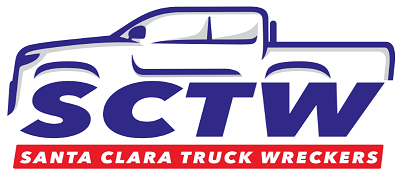Differential Repair
Whether truck has four-wheel drive or rear wheel drive, your vehicle has a differential that experiences heavy wear and tear. When scheduling a differential repair service, you should consider where you drive most often and how much time your vehicle spends traversing particular types of terrain. Tougher terrain—like dirt roads, unpaved or gravel roads—and extreme driving can have a heavier impact on the life of your vehicle’s differential. Maintenance for differentials will differ from vehicle to vehicle. As part of your normal truck maintenance schedule, a differential fluid change can positively impact the safety and health of your vehicle. Noise coming from your vehicle’s differential can be a sign of insufficient lubricant or worn gears and bearings due to regular wear and tear. At the first sign of trouble, contact us so we can quickly diagnose and correct the issue.
Whether truck has four-wheel drive or rear wheel drive, your vehicle has a differential that experiences heavy wear and tear. When scheduling a differential repair service, you should consider where you drive most often and how much time your vehicle spends traversing particular types of terrain. Tougher terrain—like dirt roads, unpaved or gravel roads—and extreme driving can have a heavier impact on the life of your vehicle’s differential. Maintenance for differentials will differ from vehicle to vehicle. As part of your normal truck maintenance schedule, a differential fluid change can positively impact the safety and health of your vehicle. Noise coming from your vehicle’s differential can be a sign of insufficient lubricant or worn gears and bearings due to regular wear and tear. At the first sign of trouble, contact us so we can quickly diagnose and correct the issue.
DIFFERENTIAL SERVICES
FRONT AND REAR DIFFERENTIAL
Whether or not your truck has one or two differentials depends on how the wheels of your vehicle are powered. If you have a rear-wheel drive vehicle your truck uses engine power to move only the rear wheels, so you will only have one differential mounted on the rear axle. If you have an all-wheel or four-wheel drive vehicle your truck is built in a way that allows the engine to send power to all four wheels, so you will have both a front differential and rear differential. If you have a front-wheel drive vehicle, instead of a differential you will likely have a transaxle that functions as both the transmission and the differential. Rear wheel drive vehicles will have a differential in the rear end of the truck.
DIFFERENTIAL FLUID
Inside your differential you’ll find lots of interlacing gears and bearings. These gears all rely on each other and a lubricant called differential fluid to keep the differential transferring power smoothly and seamlessly. Front differential, rear differential and limited slip differential (LSD) all require gear oil to lubricate and keep the differential drive components cool.
